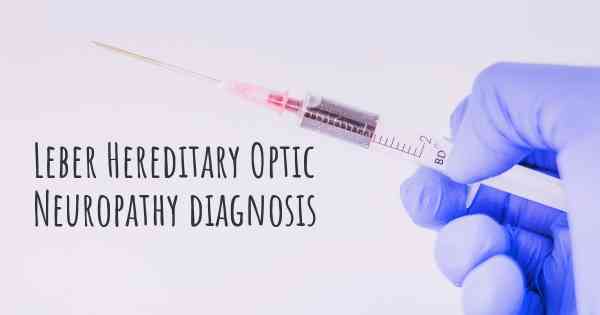4
How is Leber Hereditary Optic Neuropathy diagnosed?
See how Leber Hereditary Optic Neuropathy is diagnosed. Which specialists are essential to meet, what tests are needed and other useful information for the diagnosis of Leber Hereditary Optic Neuropathy

Translated from spanish
Improve translation
The diagnosis is made with examination of the eyes. The tests include an examination of the fundus of the eye where you can see the alterations of the optic disc and vascular changes, electrophysiological studies such as visual evoked potentials to confirm optic nerve dysfunction, and electroretinogram to confirm that there is no disease of the retina; also other tests may be done to avert other causes of optic neuropathy. The genetic test showing a mutation in the gene involved with this disease may help with the diagnosis, although in more or less than 10% of people in the test did not show any alterations in any gene. It is good to have a neurological examination, detailed and other tests if necessary, such as a magnetic resonance imaging of the brain.[2][5][4]
Last update: 3/13/2017
Exams
The Genetic Testing Registry (GTR) maintains a list of laboratories that offer testing of genetics for this disease. Most of the times the laboratories do not accept direct contact with patients and their families only with a health professional. A professional genetics can guide to know if you will need to do the genetic test.
Source: https://rarediseases.info.nih.gov/espanol/13049/neuropatia-optica-hereditaria-de-leber#diseaseTratamientoSection
Last update: 3/13/2017
Exams
The Genetic Testing Registry (GTR) maintains a list of laboratories that offer testing of genetics for this disease. Most of the times the laboratories do not accept direct contact with patients and their families only with a health professional. A professional genetics can guide to know if you will need to do the genetic test.
Source: https://rarediseases.info.nih.gov/espanol/13049/neuropatia-optica-hereditaria-de-leber#diseaseTratamientoSection
Posted May 20, 2017 by Enrique Guzmán 1370








